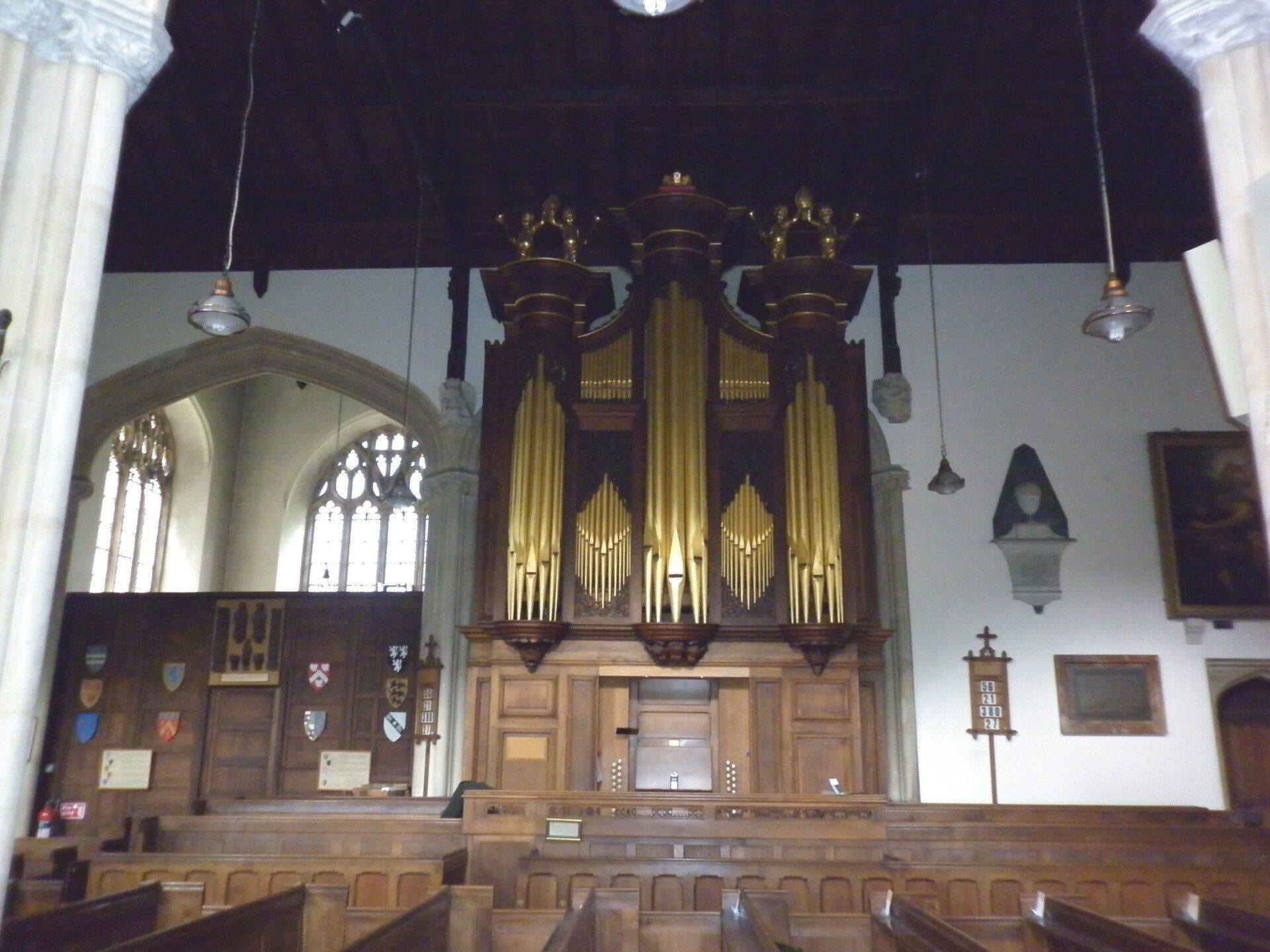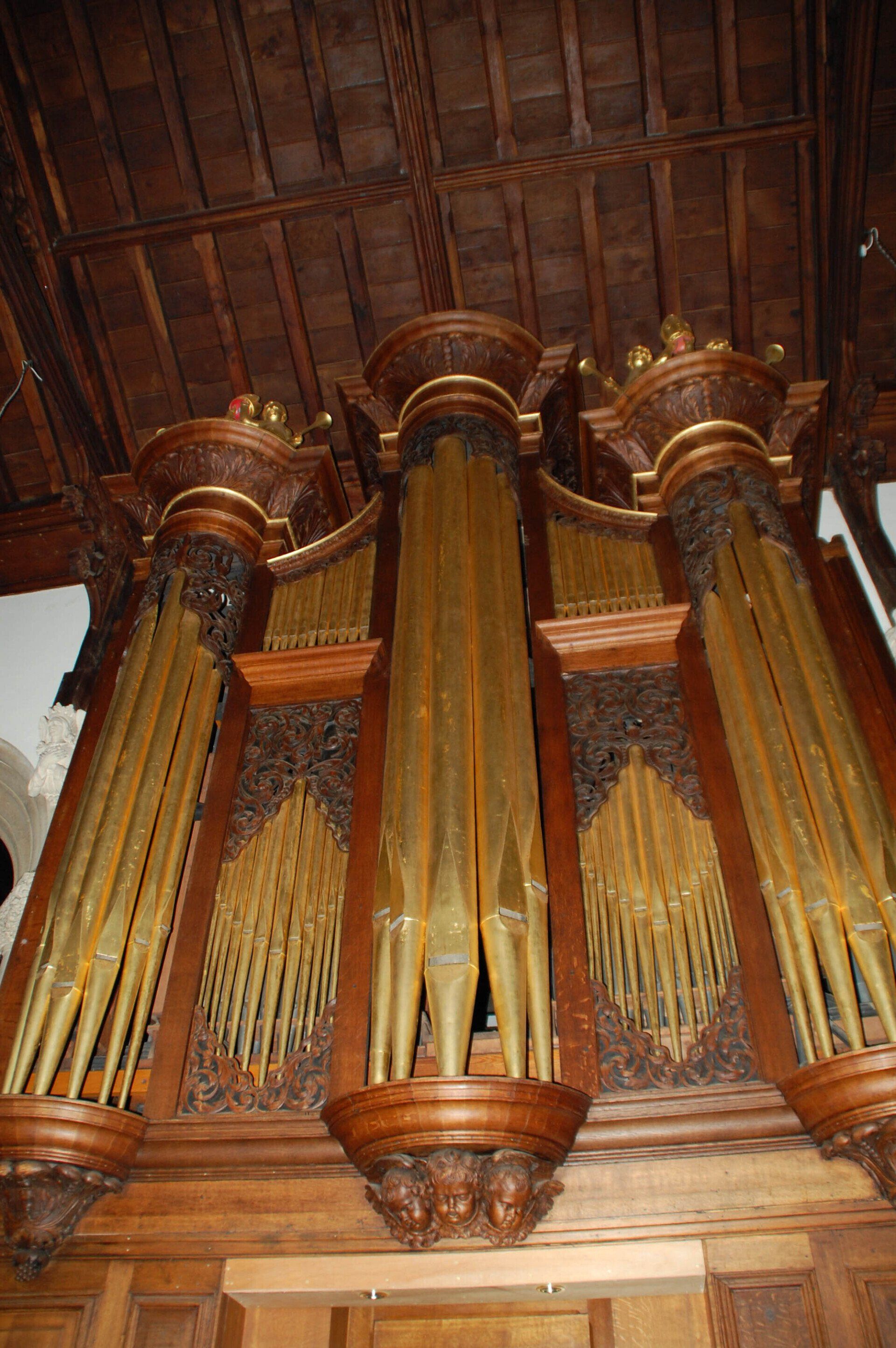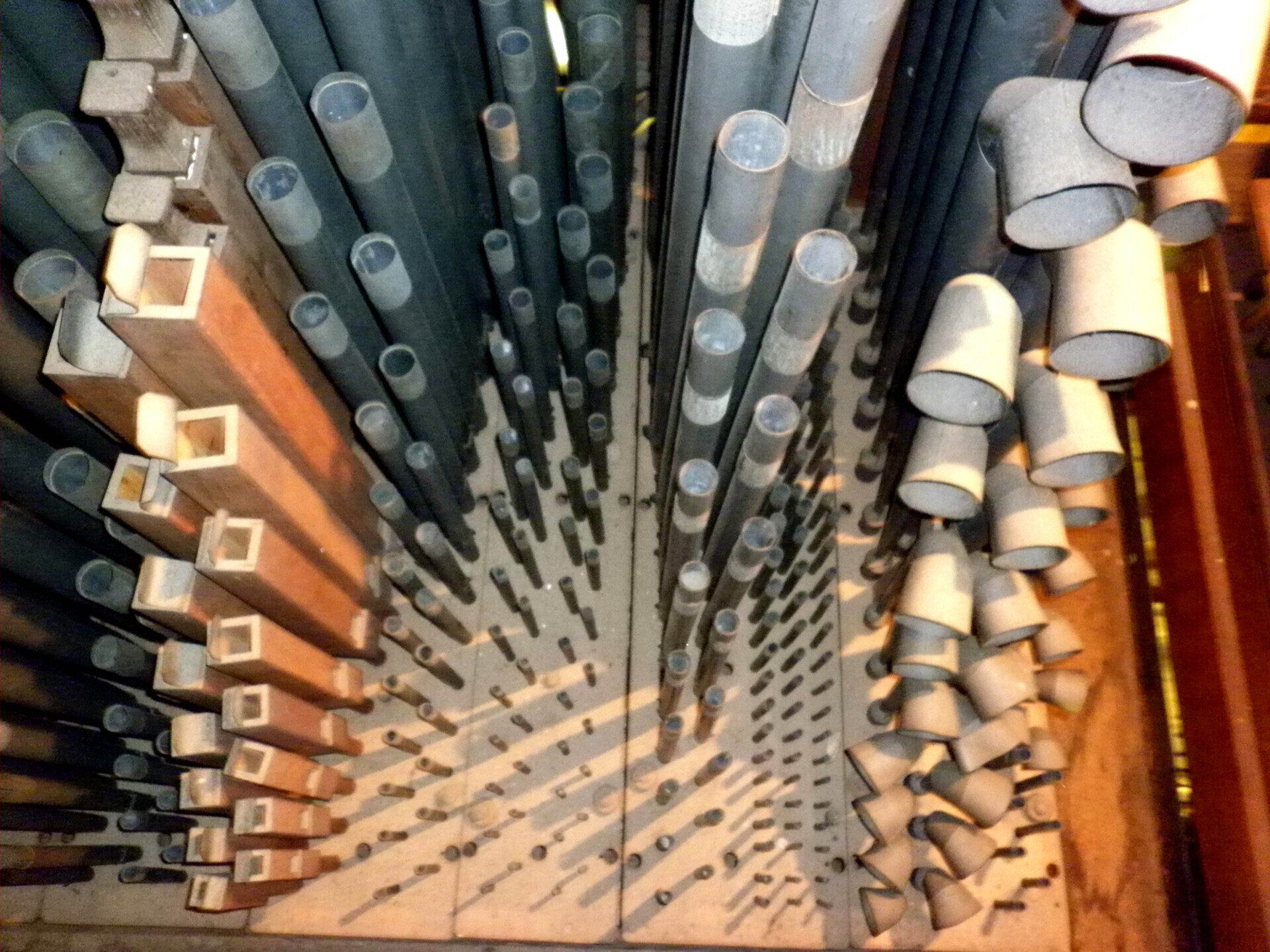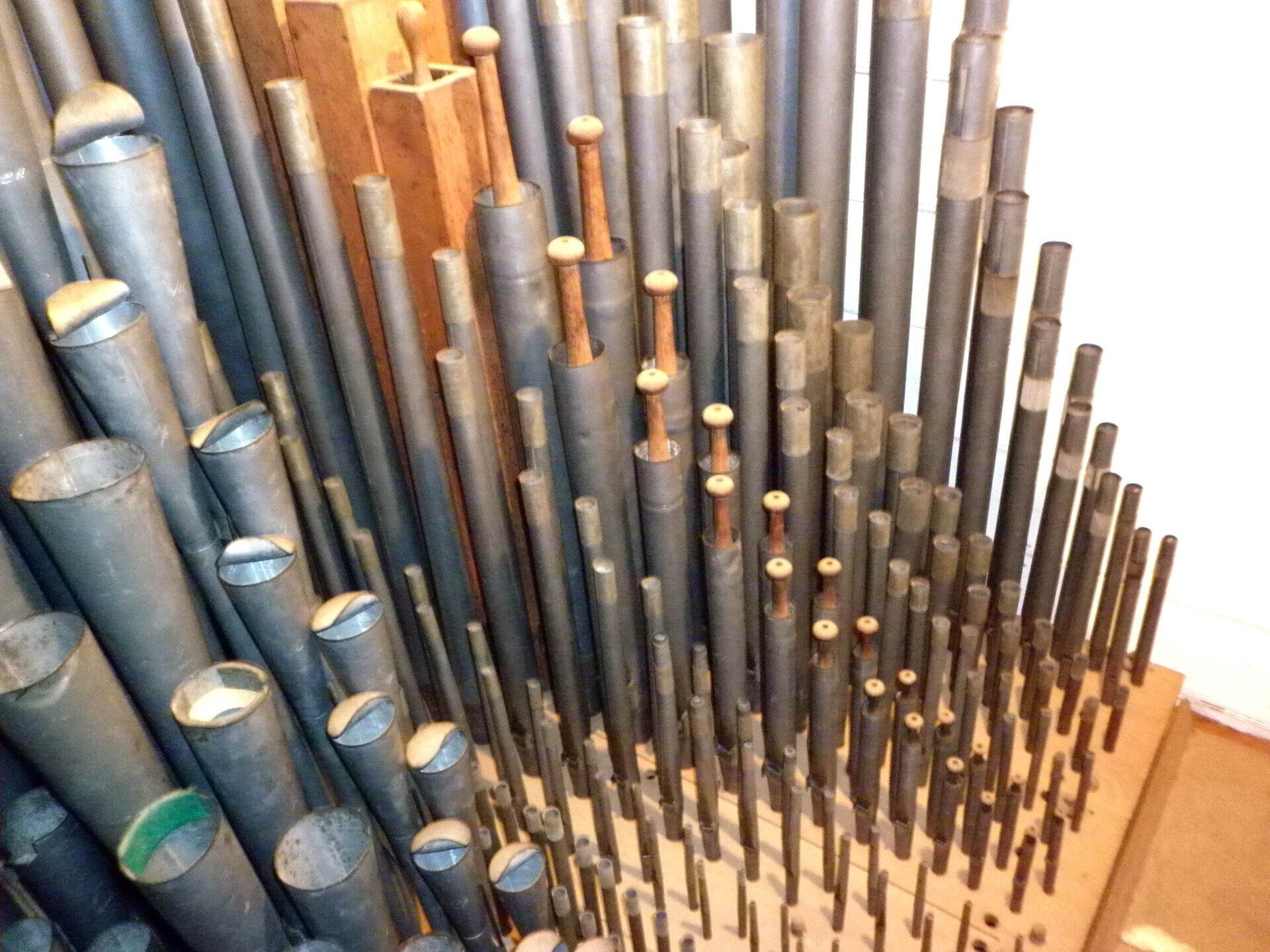Smith, Snetzler, Willis & Others
Basic Screen shot of single monitor screen
Additional stops are marked in red lettering. On the Great organ, there are two Sesquialteras one within the Great stops and the other to the left of the Choir stops. The former is the original and the latter is a matching replacement with single ranks. In addition Choir stops that were removed in the Mander rebuild, have been reintroduced from a similar Father Willis organ.
It can be surmised that the original Swell Cornet was probably a 12;17 stop but was altered to the current quint mixture composition of 19:22. The toe holes and rack boards show that this was a two rank. A separate third tierce rank has been added to create a more typical Willis mixture. It can be added as wished to complete a III rank Cornet. There is an additional Celeste which is not present in the existing specification for extended use. This is made up of FW pipes from another instrument. There will most likely be additional Pedal stops to provide a more independent Pedal division. Possible candidates are an 8' + 4' extensions to the Bourdon 16' and possibly an 8 ' extension to the Open Wood to 8'.
The above image is the pre- release basic screen using HW graphics. The layout may change in the final release.
Great Organ
Barker Lever
Contra Gamba 16
Open Diapason (I) 8
Open Diapason(II) 8
Stopped Diapason 8 wood and metal Viola 8
Principal 4
Twelfth 3
Fifteenth 2
Sesquialtera III 17.19.22 Posaune 8 heavy wind Clarion 4 heavy wind
Swell Organ
Tracker
Bourdon 16 (Contra Gamba)
Open Diapason 8
Lieblich Gedact 8
Salicional 8
Gemshorn 4
Flageolet 2
Cornet II 19.22
Oboe 8
Cornopean 8
Clarion 4
Additional Celeste and Tierce rank
Tremulant
Original Choir organ
Tracker
Dulciana 8
Lieblich Gedackt 8 wood and metal Viol d'Amour 8
Claribel Flute 8
Gemshorn 4
Flageolet 2
Corno di Bassetto 8
Rebuilt Choir Organ
Tracker
Dulciana 8
Lieblich Gedackt 8
Gemshorn 4
Nason Flute 4 Mid C, 8' bass
Flageolet 2
Sesquialtera II 12:17
Sharp Mixture III 22.26.29
Corno di Bassetto 8
Pedal Organ
Tubular pneumatic
Open Diapason 16 wood Bourdon 16 wood
Flute 8 metal Violoncello
Ophicleide 16 wood, heavy wind
Couplers etc.
Swell to Pedal
Swell to Great
Swell octave to Great
Swell suboctave to Great
Choir to Great
Choir to Pedal
Great to Pedal
Accessories
balanced swell pedal
3 combination pedals to Swell and Great.
Work is in progress on this set and it is hoped that it will be ready sometime in early 2024.







